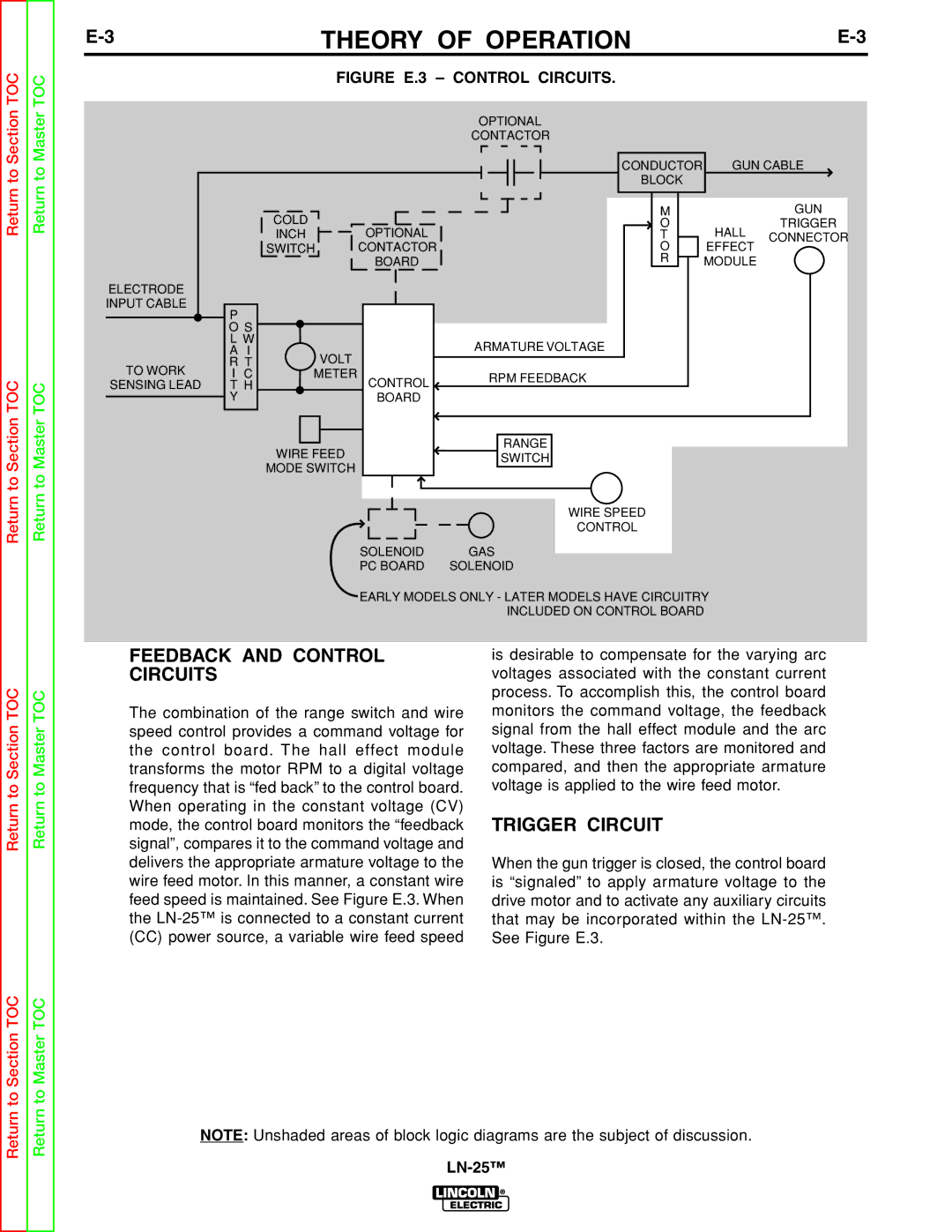
TOC
TOC
THEORY OF OPERATION | ||
| FIGURE E.3 – CONTROL CIRCUITS. |
|
Return to Section
Return to Section TOC
Return to Master
Return to Master TOC
ELECTRODE INPUT CABLE
TO WORK
SENSING LEAD
|
|
| OPTIONAL |
|
|
|
|
| CONTACTOR |
|
|
|
|
| CONDUCTOR | GUN CABLE | |
|
|
| BLOCK |
|
|
COLD |
|
| M |
| GUN |
| OPTIONAL | O | HALL | TRIGGER | |
INCH |
| T | CONNECTOR | ||
SWITCH | CONTACTOR | O | EFFECT |
| |
|
| BOARD | R | MODULE |
|
P |
|
|
|
|
|
O S |
|
|
|
|
|
L W |
|
| ARMATURE VOLTAGE |
|
|
A I | VOLT |
|
|
| |
R T |
|
|
|
| |
I C | METER | CONTROL | RPM FEEDBACK |
|
|
T H |
|
|
| ||
|
|
|
| ||
Y |
| BOARD |
|
|
|
WIRE FEED |
| RANGE |
|
| |
| SWITCH |
|
| ||
MODE SWITCH |
|
|
| ||
|
|
|
| ||
|
|
| WIRE SPEED |
|
|
|
|
| CONTROL |
|
|
|
| SOLENOID | GAS |
|
|
|
| PC BOARD | SOLENOID |
|
|
|
| EARLY MODELS ONLY - LATER MODELS HAVE CIRCUITRY |
| ||
|
|
| INCLUDED ON CONTROL BOARD |
| |
Return to Section TOC
Return to Master TOC
FEEDBACK AND CONTROL CIRCUITS
The combination of the range switch and wire speed control provides a command voltage for the control board. The hall effect module transforms the motor RPM to a digital voltage frequency that is “fed back” to the control board. When operating in the constant voltage (CV) mode, the control board monitors the “feedback signal”, compares it to the command voltage and delivers the appropriate armature voltage to the wire feed motor. In this manner, a constant wire feed speed is maintained. See Figure E.3. When the
is desirable to compensate for the varying arc voltages associated with the constant current process. To accomplish this, the control board monitors the command voltage, the feedback signal from the hall effect module and the arc voltage. These three factors are monitored and compared, and then the appropriate armature voltage is applied to the wire feed motor.
TRIGGER CIRCUIT
When the gun trigger is closed, the control board is “signaled” to apply armature voltage to the drive motor and to activate any auxiliary circuits that may be incorporated within the
Return to Section TOC
Return to Master TOC
NOTE: Unshaded areas of block logic diagrams are the subject of discussion.
